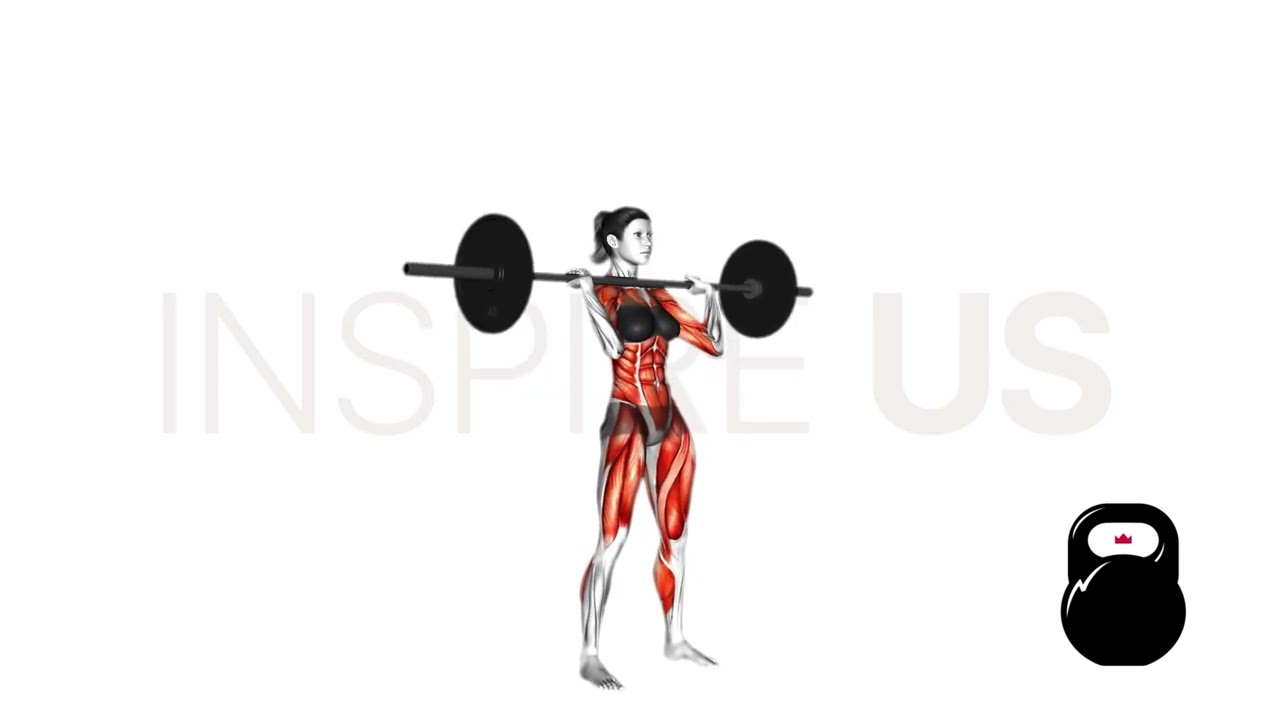Clean and Press: Benefits, Muscles Worked, and More
The classic clean and press is as iconic as it is technical, often requiring significant power and bodily coordination in order to perform safely.
But, before including this classic Olympic weightlifting exercise into your training routine, it is important to learn the ins-and-outs of what makes it unique among clean exercise variations.
The clean and press is a highly explosive lift seen in athletic training programs, functional fitness workouts and as a technical adjunct to the Olympic clean and jerk exercise - all of which it excels in as both a muscular-training movement and as a technique tool.
What is the Clean and Press Exercise?
In more technical terms, the clean and press is a highly dynamic free weight compound exercise that involves the usage of nearly every joint and muscle group within the body to some extent.
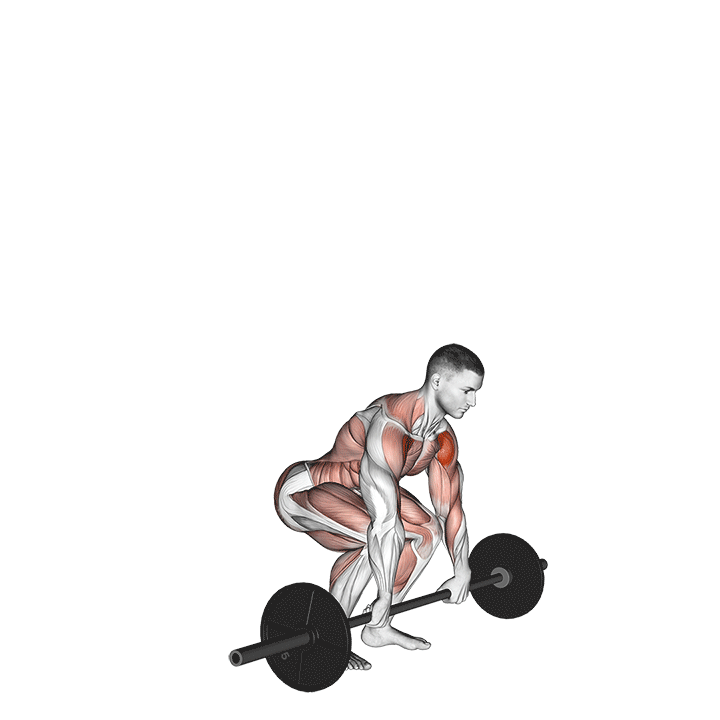
It is frequently encountered in the role of a primary compound exercise, though more advanced Olympic weightlifting programs may include it as a secondary compound exercise so as to aid in technique improvement.
Though the programming of this particular exercise can vary, it is most often performed at a moderate to high level of resistance and moderate volume of repetitions per set.
Who Should Perform the Clean and Press?
The clean and press is a perfectly appropriate exercise for generalist weightlifters of at least an intermediate strength level, though more specialized athletes can include it in their novice-level training programs, so long as extra care is taken concerning form and load.
Unfortunately, because of the highly dynamic and body-wide nature of the clean and press, it is largely unsuitable for individuals with a history of injury in the shoulders, elbows, wrists, hips, knees or back.
Clean and Press Equipment Requirements
The clean and press is primarily performed with a barbell and set of weight plates, though lifters wishing to splurge on equipment will see far safer and more convenient results from purchasing Olympic bumper plates and an Olympic weightlifting platform as well.
How to Do a Clean and Press
To perform a repetition of the clean and press exercise, the lifter will stand upright with a loaded barbell at their feet, of which are set slightly wider than hip-width apart for maximum stability.
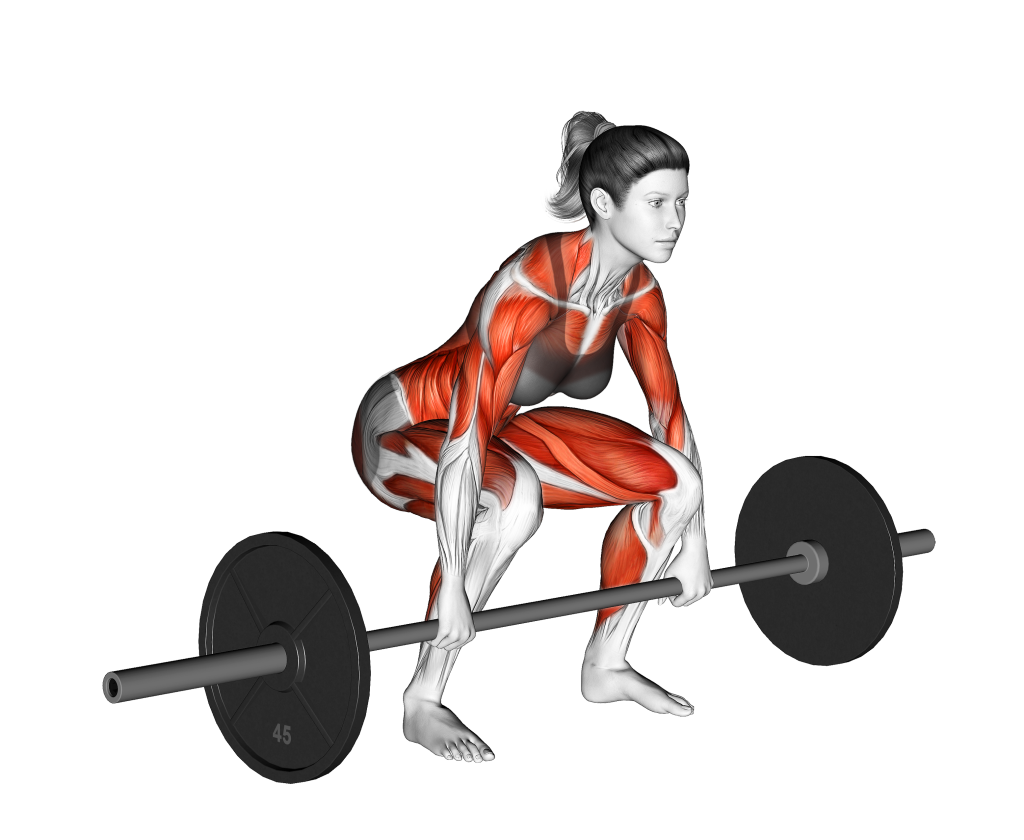
Then, in a single smooth motion, the lifter will squat downwards and grab the barbell in a pronated grip, rapidly straightening as they throw the barbell upwards (the clean portion of the movement).
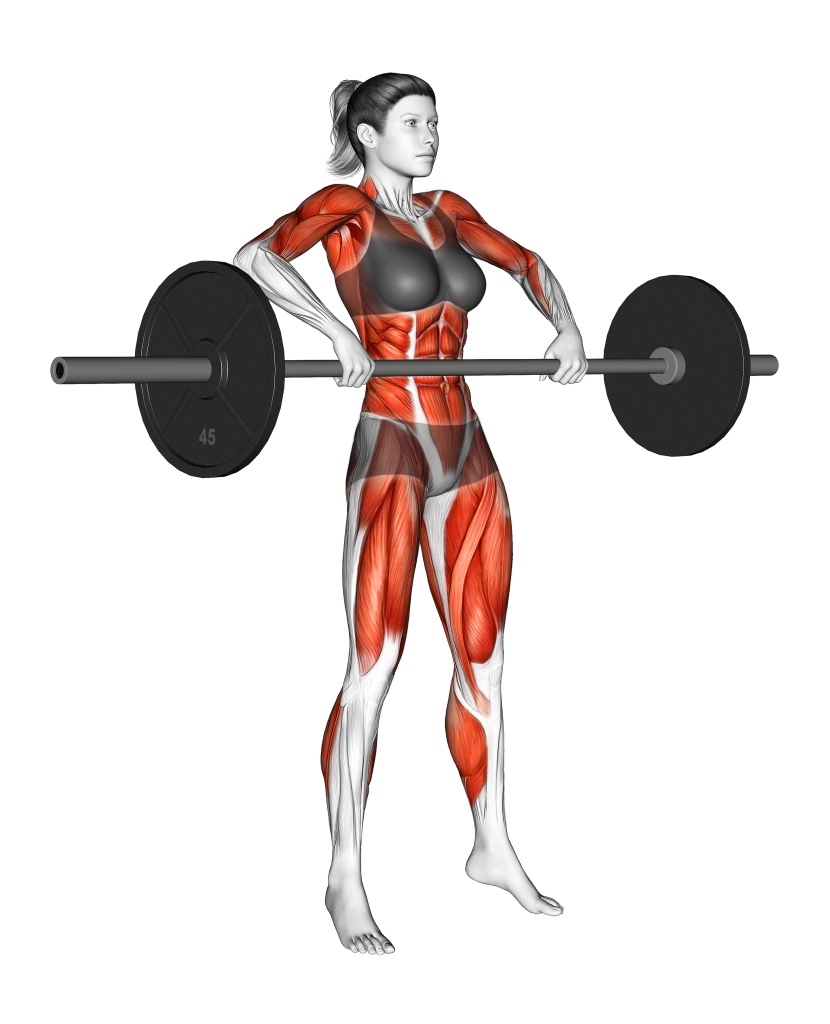
Once the barbell has reached sufficient elevation, they will half-squat beneath it, “racking” it atop their chest shelf as if performing a front squat.
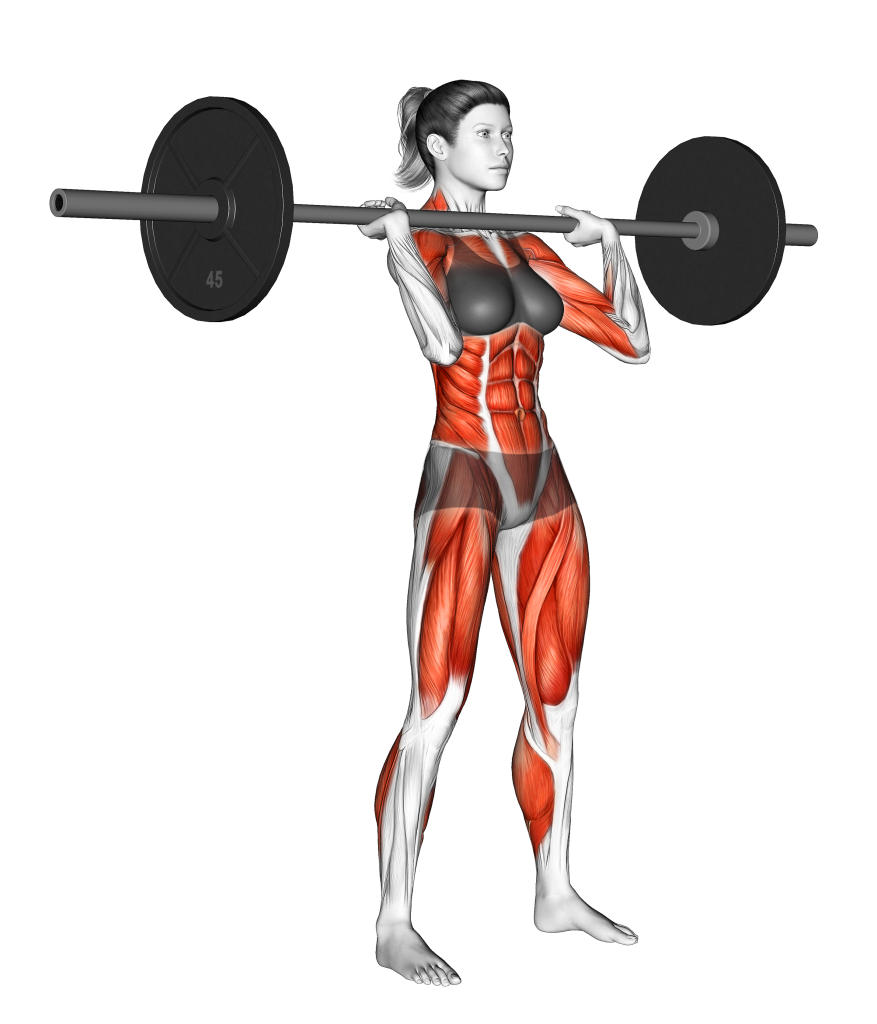
From this position, they will rapidly straighten once more, simultaneously pressing the barbell overhead until their arms are in a state of full extension - just as would be done in a push press exercise.

This completes a repetition of the Olympic clean and press exercise.
What Muscles are Worked by the Clean and Press?
As the clean and press is a wide-reaching compound exercise that involves nearly every muscle group within the body, it should be no surprise that the number of muscles worked is also quite significant.
However, not all of these muscles are recruited to the same extent, or even in the same capacity - and as such, it is important to understand that the muscles used to the fullest extent and in a dynamic manner are known as primary mover muscles, whereas muscles used to a lesser extent or solely in a supportive capacity are known as secondary mover muscles or stabilizers.
Primary Mover Muscles
The primary muscles worked by the clean and press are; the quadriceps or quads, the glutes, the deltoids, the latissimus dorsi, the trapezius and the triceps brachii.
Secondary Mover Muscles and Stabilizers
Other muscle groups that are also recruited to a lesser degree by the clean and press are; the entirety of the core (including the erector spinae and lower back), the biceps brachii, the hamstrings and the calves.
What are the Benefits of Doing the Clean and Press?
Asides from the usual hypertrophy and strength benefits of performing a resistance exercise, the clean and press is also quite adept at instilling certain positive effects in a lifter that would otherwise be difficult to achieve with other exercises, making it an essential lift for those that require the following benefits.
Power and Explosiveness Boost
The clean and press is by and large a power-based exercise, as it is performed in a single smooth motion with a great deal of momentum being utilized so as to complete each repetition.
Naturally, as a lifter performs this exercise with regularity, their body and mind will come to adapt to such a type of exercise, causing their body to improve in terms of muscular rate of force output, as well as the fact that they will grow mentally more accustomed to moving large amounts of weight in such a way.
This is especially essential for athletes or lifters wishing to improve their functional fitness, as muscular power is utilized far more often outside of the gym than is the sort of slow grind that one would perform with exercises like the back squat or bench press.
Full-Body Training
Because of the fact that the clean and press is essentially one lower body exercise and one upper body exercise combined into a single movement, it is capable of training practically every part of the lifter’s physiology simultaneously.
For lifters strapped for time or seeking greater central nervous system (CNS) training, the clean and press is an excellent tool - all the more so if they are utilizing the clean and press as a primary compound movement in their workout.
Carryover to All Real Life Athletic Activities
The clean and press’s capacity to build the entirety of the body in both gross muscular strength and power means it is essential for any serious athlete’s training.
Not only will the clean and press result in better overall athletic performance, but it will also aid in the more technical side of athletic activities - helping familiarize the athlete with their own body, as well as how to direct the force that they are capable of outputting.
Furthermore, even for lifters who are not athletes, the clean and press is still nonetheless a highly functional exercise that can aid with the improvement of many real-life circumstances, such as lifting heavy objects from the floor or carrying an object overhead.
Olympic Weightlifting Specificity
The clean and press is a classic Olympic exercise for a reason; it is mechanically and physiologically identical to the clean and jerk, with the sole difference being the depth to which the lifter will lower themselves when transitioning from the clean to the latter movement.
Whether it be because of a poor initial clean technique or poor lower body mobility, the clean and press is a surefire way of carrying over power and technical expertise to the competition lift of the clean and jerk, thereby improving the Olympic weightlifter’s performance in their sport.
Common Mistakes of the Clean and Press
With how technically complex the clean and press can be, it should be no surprise that most lifters will make a mistake or two.
However, even with how common the following mistakes can be, it is still vitally important to correct them as soon as possible, as they can not only negate the benefits of the clean and press, but also place the lifter at serious risk of injury if left unchecked.
Rounding of the Back
Just as is the case in a clean, back squat or even a deadlift - rounding the back during the initial pull off the ground, or even rounding the upper back during the “racked” position mid-way through is a mistake.
This will place excessive force and stress on the spinal column and the delicate soft tissues of the lower back, potentially leading to injury if not “bailing” the repetition altogether due to a disadvantageous positioning failing to translate force from the lower body.
Regardless of what part of the clean and press is currently being performed, the lifter should strive to always maintain a properly braced core and a neutral spinal curvature, as these two are the best cues for avoiding injury.
Incorrect Hand Distance
Whether it be by setting the hands too close together or too far apart, the lifter risks losing their grip on the barbell or otherwise placing excessive rotational force on their shoulders with an incorrect hand width.
For the best results, most lifters will find that performing the clean and press with their hands set only a few inches further than shoulder-width apart is the ideal distance - though, depending on mobility and their proportions, it may be somewhat further.
It is best to experiment with an empty bar, as each lifter is unique and may find that their most comfortable grip-width is out of the norm.
Heels Rising From the Floor
Just as is the case in a push press or squat, allowing the heels to rise off the ground can cause the forefoot to bear more of the lifter’s weight, altering their balance and potentially leading to injuries if allowed to continue.
While most cases of this mistake are due to poor ankle mobility, it can also be a failing of technique where the lifter allows the weight of the barbell to draw their body forwards - both instances must be corrected, either with ankle-targeted mobility work or by bending further back during the clean and press.
Squatting Too Deeply
It is important to remember that the clean and press is distinct from the clean and jerk, and that squatting too deeply as you “catch” the barbell after the initial pull will alter the mechanics and intensity of the exercise.
Most instances of this mistake are simply due to poor timing, where the lifter will clean the barbell upwards but fail to lower themselves beneath it in time to “rack” the bar atop the chest shelf.
Practicing with an empty bar is the best way to remedy this.
Clean and Press Variations
For lifters without access to the right equipment, or simply those that wish to shake up their training program, there are several possible clean and press variations that provide a somewhat different training experience than the traditional barbell Olympic clean and press exercise.
Non-Barbell Clean and Press Variations (Dumbbells, Kettlebells, etc.)
For lifters without access to a barbell, it is entirely possible to perform a clean and press with a number of different free weight implements - all of which may feature their own unique form mechanics.
The most common are the dumbbell and kettlebell clean and press variations, though some lifters may even perform the exercise with a resistance band or non-standard equipment.
It is best to research how to perform these exercises on their own, as changes in equipment can involve different grip forms, techniques and even muscles recruited.
Unilateral or Single-Arm Clean and Press
The clean and press may be performed with only a single arm at a time, helping the lifter to overcome upper-body muscular imbalances and further improving their clean or press technique as they can better focus on the function of one side of the body at a time.
Most often, these variations will use a dumbbell or kettlebell, as performing the barbell clean and press one-handed is entirely impractical.
The Clean Exercise and the Push Press Exercise
For lifters wishing to work on each individual phase of the clean and press separately, it is possible to break the exercise into simply a clean and a press - of which can aid in overcoming sticking points, getting a better length of time under tension or help focus on a particular form cue.
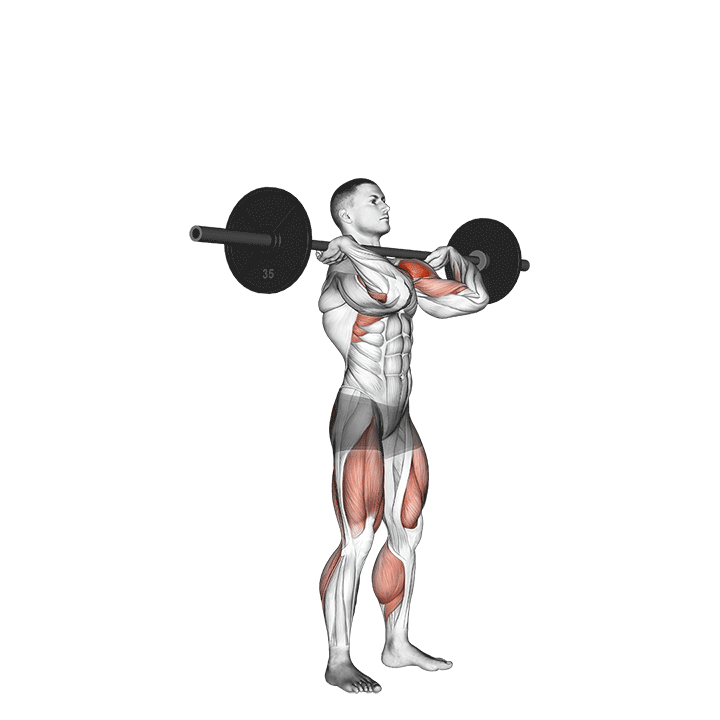
Frequently Asked Questions (FAQ)
Is the Clean and Press Good for Mass?
Though the clean and press is an excellent exercise for many things - no, unfortunately it is not the best choice for building muscle mass.
Inducing muscular hypertrophy (also known as growing muscle mass) is primarily stimulated by time under tension and moderate to high levels of training volume - otherwise meaning that slow and numerous repetitions are best, of which is the complete opposite of how the clean and press is done.
What is a Clean in the Clean and Press?
The “clean” portion of a clean and press is simply the motion of the lifter pulling a barbell from the floor and throwing it upwards until they can rack it atop their chest shelf - or what is otherwise known as “cleaning” a barbell.
This is a fundamental movement in many Olympic weightlifting exercises, and it is important to master it before moving onto the more technical clean and press exercise.
Why is it "Called Clean and Press"?
The clean and press is named after the two main portions of its movement: the initial upward pull of the barbell is known as the clean, while the second phase of the exercise where the barbell is pushed overhead is known as the press - hence the name, clean and press.
Final Thoughts
Remember that - among all exercises - the clean and press must be performed with as on-target form as possible, as it will involve multiple moving joints and a heavy amount of weight moving at high speeds.
If you are inexperienced or just returning to training, it is important to practice and warm-up sufficiently before attempting a full working weight clean and press.
References
1. Soriano MA, Suchomel TJ, Comfort P. Weightlifting overhead pressing derivatives: a review of the literature. Sports Med. 2019;49(6):867-885. doi:10.1007/s40279-019-01096-8.
2. Storey A, Smith HK. Unique aspects of competitive weightlifting: performance, training and physiology. Sports Med. 2012 Sep 1;42(9):769-90. doi: 10.1007/BF03262294. PMID: 22873835.

